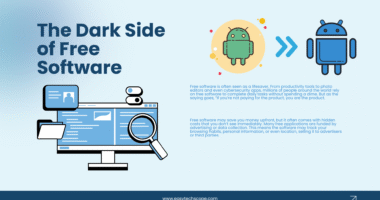Web development is a wide field where two essential aspects work together to create functional and visually appealing websites or applications. These aspects are front-end development and back-end development. Understanding the differences between the two helps beginners, businesses, and aspiring developers choose the right path and build better digital solutions.
What is Front-End Development?
Front-end development focuses on the part of a website or application that users directly see and interact with. It is often called the client-side of web development. Every button, menu, image, or animation visible on a website is built by front-end developers.
The primary goal of front-end development is to provide a smooth, user-friendly experience while ensuring responsiveness across different devices.
Key Technologies in Front-End
-
HTML (HyperText Markup Language): Structures the web content.
-
CSS (Cascading Style Sheets): Styles the layout, fonts, and colors.
-
JavaScript: Adds interactivity, animations, and logic to the interface.
-
Frameworks and Libraries: Tools like React, Angular, and Vue.js simplify and speed up development.
Front-end developers must also consider UX (User Experience) and UI (User Interface) design principles to ensure visitors engage effectively with the website.
What is Back-End Development?
Back-end development deals with the server-side of web applications. Unlike the front-end, it is invisible to users but powers everything happening in the background. It ensures that data is stored securely, processed correctly, and delivered back to the front-end when requested.
For example, when you log into a website, the back-end validates your information, checks it against the database, and then allows access if correct.
Key Technologies in Back-End
-
Programming Languages: PHP, Python, Ruby, Java, and Node.js.
-
Databases: MySQL, PostgreSQL, MongoDB, and Oracle manage and store data.
-
Servers: Apache, Nginx, and cloud services like AWS host and run applications.
-
Frameworks: Django, Laravel, Express.js, and Spring Boot speed up back-end development.
Back-end developers also handle security, server configuration, and API (Application Programming Interface) integration, making websites reliable and scalable.
Major Differences Between Front-End and Back-End
Focus Area
Front-end developers concentrate on how a website looks and feels, while back-end developers ensure it functions correctly behind the scenes.
Visibility
Front-end work is visible to users, whereas back-end processes are hidden but essential.
Tools and Languages
Front-end uses HTML, CSS, JavaScript, and related frameworks, while back-end relies on server-side languages and database technologies.
Skills Needed
Front-end requires creativity, design thinking, and knowledge of user experience. Back-end demands logical problem-solving, database management, and security awareness.
How Front-End and Back-End Work Together
Although they serve different purposes, front-end and back-end development are interconnected. A website cannot function without one or the other. The front-end sends requests (such as form submissions), and the back-end processes them and sends responses back. This teamwork creates a seamless user experience.
Conclusion
Front-end and back-end development are like two sides of the same coin. The front-end focuses on user interaction and design, while the back-end ensures functionality and data management. Both are essential for creating modern, responsive, and secure websites. Understanding their roles can help you choose the right career path or hire the right professionals for your project.








